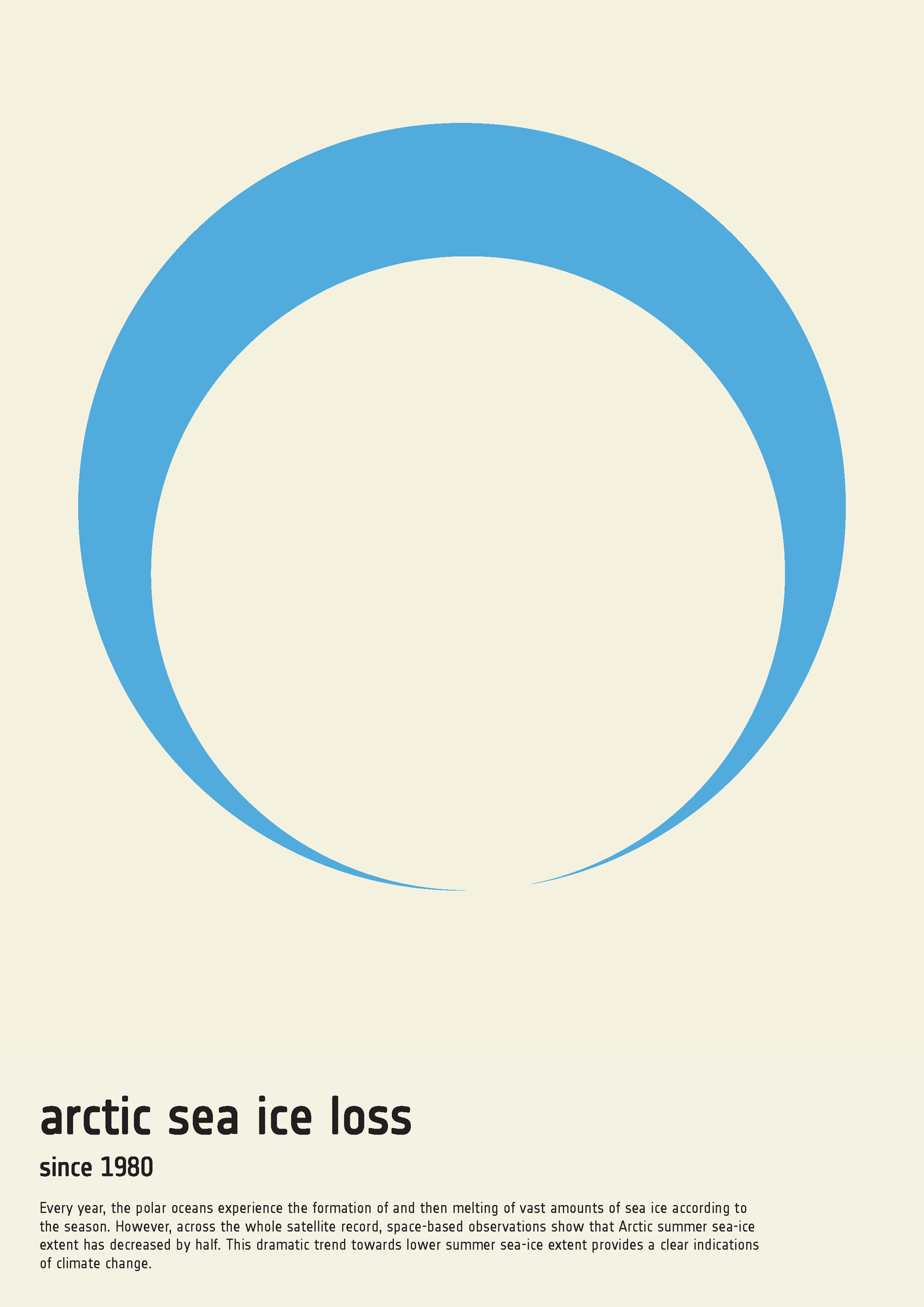ThisLittle Picture depicts the dramatic trend towards lower summer sea-ice extent and provides a clear indications of climate change. As the seasons pass each year, the Arctic ocean experiences the formation, and then melting, of vast amounts of sea ice.
However, across the whole satellite record, space-based observations show that Arctic summer sea-ice extent has decreased by half. This dramatic trend towards lower summer sea-ice extent provides a clear indications of climate change.

About
The Little Picture depicts the proportions of Land Cover classes across the planet and the extent of the human footprint on the land. The creator, Jan Everaert aimed to highlights the difference between land utilised for crop cultivation and our actual living spaces.
Land cover and land cover changes influences climate by modifying water and energy exchanges with the atmosphere and by changing greenhouse gas and aerosol sources and sinks. Land Cover is considered as one of 54 Essential Climate Variables by the Global Climate Observing System.
Data
The Little Picture uses late summer (September) sea-ice extent given in million km² in the Arctic as measured by satellites from 1979-2022 from this file - https://www.esa.int/ESA_Multimedia/Images/2023/05/Late_summer_sea-ice_extent_in_the_Arctic, generated using data from the EUMETSAT Ocean and Sea ice Satellite Application Facility (OSI SAF).
Script
There were no scripts used to build this Little Picture.
Licence
This Little Picture is published under CC BY-SA 4.0 licence.
The big picture
The European Space Agency (ESA), the European Centre for Medium-Range Weather Forecasts (ECMWF), and the European Organisation for the Exploitation of Meteorological Satellites (EUMETSAT) work closely together to measure, process & make space-derived information about the climate available.
ESA
The mission of the Climate Change Initiative (CCI) is to realise the full potential of the long-term global Earth Observation archives that the European Space Agency (ESA), together with its Member states, has established over the past 40 years, as a significant and timely contribution to the climate databases required by the United Nations Framework Convention on Climate Change. The ESA Climate Office provides a free & open CCI data facility bringing together ECV data from across its twenty-seven climate science projects, including a CCI Data Standards and a CCI Toolbox.
ECMWF
The Copernicus Climate Change Service (C3S) supports society by providing freely available authoritative information about the past, present and future climate in Europe and the rest of the World. C3S is one of the six thematic information services provided by the Copernicus Earth Observation Programme of the European Union, and has been entrusted by the European Commission to the European Centre for Medium-Range Weather Forecasts (ECMWF). One of the core components of C3S includes the Climate Data Store (CDS). This is a one-stop shop for climate information. It provides free and easy access to a wide range of climate datasets via a searchable catalogue. A freely available online toolbox allows users to build workflows and applications suited to their needs.
EUMETSAT
EUMETSAT operates missions both to provide weather and climate data for its member states, and as an entrusted entity under the Copernicus programme. Several missions are operated collaboratively with ESA, providing complimentary expertise and data processing, to process and distribute land, marine, and atmosphere relevant products for users. Data from EUMETSAT operated missions is frequently available in near-real-time, facilitating rapid monitoring and forecasting. Via EUMETCast, the EUMETSAT Data Services, or WEkEO, users can access data in ways that suit their needs. The data is used by the EUMETSAT satellite applications facilities, as well as across the various Copernicus Services.
next

